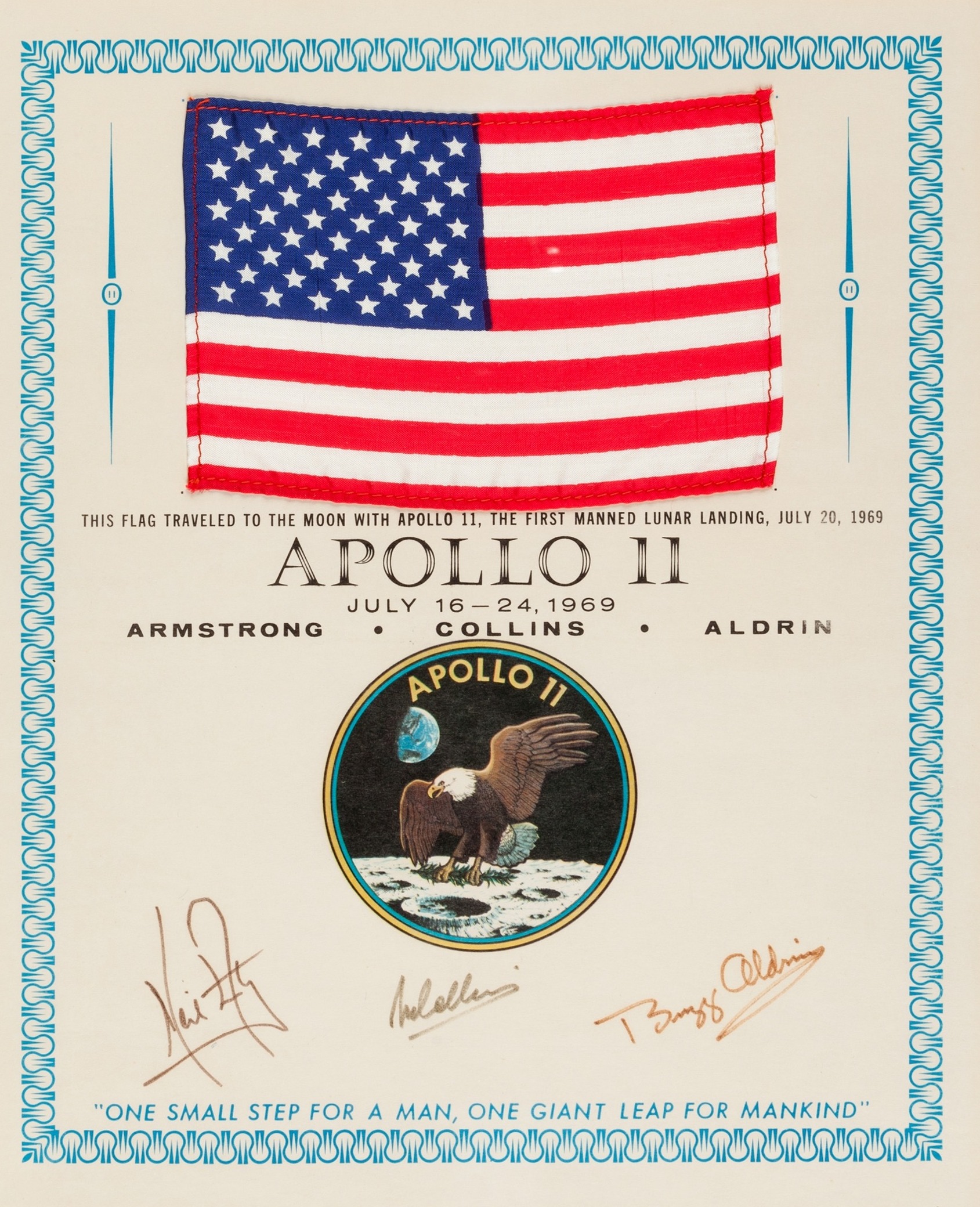
By Jim O’Neal
On July 16, 1969, three astronauts lay strapped on their backs in their space module atop a massive Saturn V rocket. Neil Armstrong, “Buzz” Aldrin and Michael Collins were going on a trip into the Florida sky headed for a landing on the moon.
The Apollo space program had begun just eight years earlier in April 1961. On April 12, the Russian cosmonaut Yuri Gagarin had become the first person into space and to orbit the Earth. That stirred President Kennedy’s competitive juices.
After Gagarin’s 90-minute orbit, JFK wrote to VP Lyndon Johnson – chairman of the National Space Council – asking: “Do we have a chance of beating the Soviets by putting a lab into space, or a trip around the moon … or by a rocket to go to the moon and back with a man?”
At the time, the American space program was not far behind – as Alan Shepard had traveled into space on May 5, 1961 – but lagged in the technology to reach the moon.
The Russians had already succeeded in launching three hard-landing rockets (unmanned spacecraft shot up with a goal of simply hitting the moon) and America was two years away from that.
So after Shepard’s feat, JFK issued his famous challenge while addressing Congress. “I believe this nation should commit itself to achieving the goal, before this decade is out, of landing a man on the moon and returning him safely to Earth.”
Back in Florida, Apollo 11 – with a mighty roar – lifted off into space to meet that challenge. Only 11 minutes after liftoff, it was in orbit with the three astronauts feeling the early stages of weightlessness.
Thirty-eight-year-old Neil Armstrong was the commander and would be accompanied by Aldrin on the moonwalk after the lunar module Eagle separated from the command module Columbia.
Michael Collins would not touch the moon’s surface, as he was responsible for making sure the Eagle launched and then re-docked for the journey back to Earth.
While only eight years had passed since JFK’s challenge, they had been difficult, turbulent ones. JFK was dead from an assassin’s bullet, as were brother Bobby and MLK Jr.
Riots in major cities and the Vietnam War had ripped at the nation’s fabric. The counterculture of drugs, sex and rock ’n’ roll was still in full throttle. (We were in San Jose and mildly surprised by the daily chaos just 45 miles up Highway 101 in San Francisco. Haight-Ashbury and Golden Gate Park were surreal.)
As millions of Americans watched Apollo 11 with awe and admiration, others felt it was a giant, expensive boondoggle designed to divert attention from widespread racial tensions and the 10 million people living below the poverty line.
Had America lost its mojo or were we entering a new, better phase? The jury was divided.
But nothing had distracted NASA except for a tragedy in 1967 when three astronauts on Apollo 1 died in a launch-pad fire. But they persevered and by July 1969 had made four successful manned flights, put spacecraft into orbit around the moon and tested the lunar module.
The Russian program unraveled when a chief scientist died and their highly secret N1 rockets exploded at least four times. Soviet politicians privately ceded the race to America and could only watch from the sidelines.
It took Apollo 11 three days to reach the moon and on July 19 the Columbia entered lunar orbit. On July 20, Armstrong and Aldrin entered the Eagle and landed it on the moon.
“Houston, Tranquility Base here. The Eagle has landed.” It was July 20, 1969.
There were four more manned missions to the moon. The last was in December 1972. Then the program was scrapped.
It has been 43 years since a human has been on the moon and we now rely on Ridley Scott (The Martian) and other filmmakers to fill the gap as we struggle with overpopulation, geopolitics and terrorism and a resurgence of racial tension.
Progress is difficult.
P.S. A surprising number of people (6 percent to 20 percent by annual polling) believe the whole moon thing was a hoax, anyway.
 Intelligent Collector blogger JIM O’NEAL is an avid collector and history buff. He is President and CEO of Frito-Lay International [retired] and earlier served as Chairman and CEO of PepsiCo Restaurants International [KFC Pizza Hut and Taco Bell].
Intelligent Collector blogger JIM O’NEAL is an avid collector and history buff. He is President and CEO of Frito-Lay International [retired] and earlier served as Chairman and CEO of PepsiCo Restaurants International [KFC Pizza Hut and Taco Bell].
